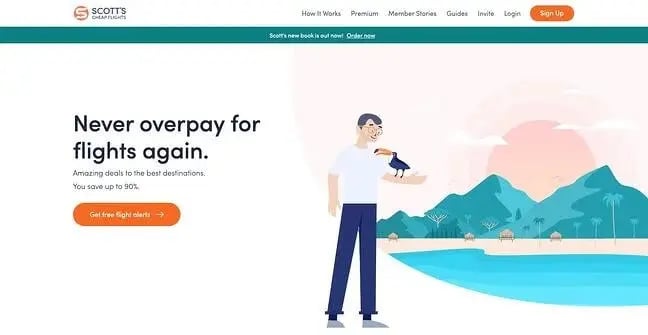Achieve Online Success With User-Friendly Website Layout
In the significantly competitive electronic landscape, the design of a website can be a pivotal factor in figuring out a company's success. Straightforward style not just enhances the total customer experience yet additionally influences key metrics such as conversion, retention, and engagement rates. By prioritizing intuitive navigating and accessibility, organizations can promote an extra inclusive setting that allures to a broader audience. Understanding the particular principles and functions that contribute to reliable layout needs a more detailed evaluation of present trends and ideal techniques, which could expose opportunities for considerable renovation.
Value of Customer Experience
Individual experience (UX) plays a crucial duty in the success of an internet site, as it straight influences customer contentment and involvement. A favorable UX guarantees that visitors can navigate the website effortlessly, gain access to info rapidly, and complete wanted actions, such as authorizing or making a purchase up for an e-newsletter, without disappointment.
In a digital landscape where competitors is tough, a web site that prioritizes UX can significantly improve brand commitment and retention. Individuals are more probable to go back to a site that uses a smooth experience, developing a cycle of repeat check outs and enhanced client lifetime value. In addition, effective UX layout can reduce bounce prices, as users are much less inclined to leave a site that fulfills their needs efficiently.
Additionally, search engines significantly take into consideration user experience aspects when ranking internet sites. Thus, spending in individual experience is crucial for attaining long-lasting success in the digital industry.
Secret Concepts of User-Friendly Layout
A successful user-friendly style rests on several crucial principles that boost use and ease of access. Firstly is simplicity; a clutter-free interface makes it possible for customers to browse easily, minimizing cognitive load. This concept emphasizes the value of concise and clear material, permitting customers to locate info quickly without unneeded interruptions.
Uniformity is one more crucial component. Constant use shades, fonts, and designs fosters familiarity and constructs trust fund. Customers need to feel comfy as they discover different sections of the website, understanding that similar components indicate related performances.
Effective typography likewise plays an essential function in straightforward layout. Legible font styles, proper sizes, and ample spacing ensure that material is quickly legible across various gadgets. Incorporating intuitive aesthetic hierarchies assists customers identify crucial info and actions at a glimpse.

Necessary Attributes for Navigation
Effective navigating is important for any user-friendly web site, as it straight impacts the overall customer experience. A well-structured navigation system enables customers to situate details swiftly and effectively, minimizing frustration and enhancing involvement.
One vital feature is a clear and user-friendly menu that classifies material logically - website design copyright. This food selection ought to be quickly accessible from every page, frequently placed on top or on the side of the site. Additionally, integrating breadcrumb navigating aids customers recognize their area within the site power structure and makes it less complicated to backtrack
Search functionality is one more vital part, enabling individuals to discover particular material without filtering through numerous web my blog pages. This feature should be prominently displayed and responsive to variations in input.
Furthermore, a mobile-responsive layout makes sure that navigation remains smooth throughout tools. As mobile use proceeds to climb, menus must adjust to various screen sizes without endangering performance.
Lastly, aesthetic hints such as highlighting the active page and using hover effects can enhance user interaction. By integrating these necessary attributes, site designers can create a navigational experience that is not just straightforward but likewise motivates expedition and retention.
Access Factors To Consider
Accessibility considerations are indispensable to producing an user-friendly website that deals with all individuals, no matter their specials needs or capabilities (website design copyright). Web sites must be designed to make certain that individuals with aesthetic, auditory, cognitive, or motor problems can involve with content efficiently. This begins with adherence to the Web Web Content Ease Of Access Guidelines (WCAG), which provide a structure for making digital web content more easily accessible
Trick techniques include using descriptive different message for pictures, guaranteeing shade comparison ratios satisfy availability standards, and providing inscriptions for multimedia aspects. Furthermore, the navigating ought to be intuitive, enabling users to tab with web links and interactive components quickly. Executing keyboard navigation is vital for those unable to utilize a mouse.
Moreover, concise and clear language boosts comprehension for customers with cognitive restrictions. Types need to be straightforward, with tags and guidelines that are very easy to comprehend. Normal ease of access screening, including individual feedback from individuals with impairments, can help determine obstacles and improve functionality.
Determining Design Success

User responses surveys and functionality screening are crucial in examining the effectiveness of design elements. These techniques permit designers to collect direct input from individuals, recognizing discomfort points and areas for improvement. Furthermore, tracking heatmaps can disclose where customers click most regularly, aiding to inform layout modifications and content prioritization.
Analytics devices play an important role in measuring layout success by giving data-driven understandings. For instance, Google Analytics can track user actions, disclosing patterns that suggest whether the style is facilitating or hindering the customer trip. Inevitably, a successful site design not just fulfills organization goals but additionally promotes a seamless and enjoyable individual experience, driving involvement and loyalty gradually. Consistently reviewing these metrics makes certain that the internet site advances abreast with customer demands and sector ideal practices.
Verdict
Finally, user-friendly website style is critical for attaining on-line success. Focusing on individual experience with simpleness, intuitive navigating, and effective responses devices not only boosts customer involvement and fulfillment yet likewise fosters brand loyalty. Integrating vital navigation features and availability factors to consider better ensures that all customers can effectively engage with the website. Ultimately, determining layout success offers important insights that direct continual enhancement, strengthening a solid on-line visibility in a competitive digital landscape.
Websites should be created to ensure that users with aesthetic, auditory, cognitive, or motor impairments can engage with content properly.Determining style success includes reviewing just how properly a web site satisfies its desired objectives while supplying a positive individual experience. Google Analytics can track user habits, revealing patterns that show whether the design is impeding the individual or facilitating trip. Inevitably, an effective site layout not just meets organization objectives however additionally fosters a smooth and satisfying individual experience, driving interaction our website and commitment over time. Prioritizing individual experience with simplicity, instinctive navigating, and effective responses devices not only improves user interaction and complete satisfaction however additionally fosters brand name loyalty.